Rhinoplasty, often referred to as a nose job, is one of the more common facial cosmetic surgeries worldwide. It’s a surgical procedure designed to change the shape, size, or structure of the nose. It can be performed for cosmetic reasons, such as improving facial harmony and enhancing appearance, or for medical reasons, such as correcting breathing difficulties caused by structural abnormalities. There are multiple types of rhinoplasty to consider, with average prices ranging from $2,500 to nearly $16,000, depending on a number of factors. Whether for aesthetic enhancement or functional improvement, understanding what rhinoplasty entails, the different techniques available, the recovery process, and the associated costs can help prospective patients make informed decisions. This ultimate guide provides a comprehensive overview of rhinoplasty and its pricing. Find out more on low cost pricing here.
Types of Rhinoplasty
This procedure can address various concerns, including:
- Nasal asymmetry
- Dorsal humps (bumps on the bridge of the nose)
- Wide or narrow nostrils
- Drooping or upturned nasal tip
- Deviated septum
There are also two primary types of rhinoplasty: open rhinoplasty and closed rhinoplasty. The choice of technique depends on the complexity of the surgery and the surgeon’s expertise.
Open Rhinoplasty
Open rhinoplasty involves making an incision across the columella (the narrow strip of tissue that separates the nostrils) and additional incisions inside the nostrils. This technique allows for greater visibility and access to the nasal structures, making it suitable for more complex cases. Open rhinoplasty is often used for major reshaping or reconstruction.
Closed Rhinoplasty
Closed rhinoplasty involves making all incisions within the nostrils, leaving no visible scars. This technique is less invasive with a shorter recovery time, but it offers more limited access compared to open rhinoplasty. It is typically used for minor adjustments and reshaping.
The Rhinoplasty Procedure
The rhinoplasty procedure typically follows these general steps:
- Consultation: During the initial consultation, the surgeon will discuss your goals, evaluate your nasal structure, and recommend the most appropriate technique. They may also use digital imaging to show potential results.
- Anesthesia: Rhinoplasty is usually performed under general anesthesia or local anesthesia with sedation, depending on the complexity of the procedure and patient preference.
- Incision: The surgeon makes the necessary incisions based on the chosen technique (open or closed).
- Reshaping: The surgeon reshapes the nasal structure by removing, adding, or rearranging cartilage and bone. In some cases, cartilage grafts from the septum or other body parts may be used.
- Closing the Incision: Once the desired shape is achieved, the surgeon closes the incisions with sutures and may place a splint to support the new shape during the initial healing phase.
Recovery and Aftercare
Recovery from rhinoplasty varies depending on the extent of the surgery and the individual’s healing process. Generally, patients can expect:
- Swelling and Bruising: Swelling and bruising around the eyes and nose are common and typically peak within the first few days, gradually subsiding over two or so weeks.
- Nasal Congestion: Nasal congestion and difficulty breathing through the nose are normal during the initial healing phase.
- Activity Restrictions: Patients should try to avoid strenuous activities and heavy lifting for at least two weeks to prevent complications. Your surgeon may have a different recommendation, and it’s important to adhere to that.
- Followup Visits: Regular followup visits with the surgeon are essential to monitor healing and address any concerns.
Many patients can return to work and normal activities within one to two weeks, but complete healing and final results may take up to a year.
Rhinoplasty Pricing
The cost of rhinoplasty varies widely based on several factors, including the surgeon’s experience, the geographic location you’re in, facility fees, and the complexity of the procedure. On average, the cost ranges from $2,500 to nearly $16,000, according to a survey from the American Board of Cosmetic Surgery. This estimate typically accounts for the following factors:
- Surgeon’s Fee: The surgeon’s fee depends on their expertise and reputation. Highly experienced and board-certified plastic surgeons tend to charge more for their services. Their extensive training, experience, and proven track records can justify higher fees. Surgeons with strong reputations and positive patient reviews often command higher prices. Their established credibility can be a significant factor in the overall cost as well.
- Geographic Location: The cost of living in different regions can impact the price of rhinoplasty. Procedures performed in metropolitan areas or cities with high costs of living, such as New York or Los Angeles, are typically more expensive than those in smaller towns.
- Procedure Complexity: The complexity of the surgery, whether it is an open or closed rhinoplasty, affects the cost. Open rhinoplasty, which provides more access to the nasal structures, is generally more expensive due to the intricate nature of the procedure.
- Facility Fees: The type of facility where the procedure is performed can impact the cost. Accredited surgical centers or hospitals often charge more than outpatient clinics due to higher overhead costs. The cost of surgical instruments, medical supplies, and any specialized equipment used during the procedure can also contribute to the overall price.
- Additional Costs: Pre-operative tests, post-operative care, and medications may incur additional costs. Some patients may opt for additional non-surgical treatments, such as dermal fillers, to enhance the final outcome, which can increase the overall cost.
Insurance usually does not cover rhinoplasty performed for cosmetic reasons. However, if the procedure is medically necessary, such as to correct a deviated septum, part of the cost may be covered.
Rhinoplasty is a transformative procedure that can enhance both appearance and function. Understanding the types of rhinoplasty, the procedure, the recovery, and the associated costs is important for making an informed decision. Consulting with a board-certified plastic surgeon can provide personalized insights and help you achieve your desired results.
Resource Links
“Rhinoplasty Guide” via the American Board of Cosmetic Surgery
“How Much Does a Nose Job Cost?” via GoodRx Health

